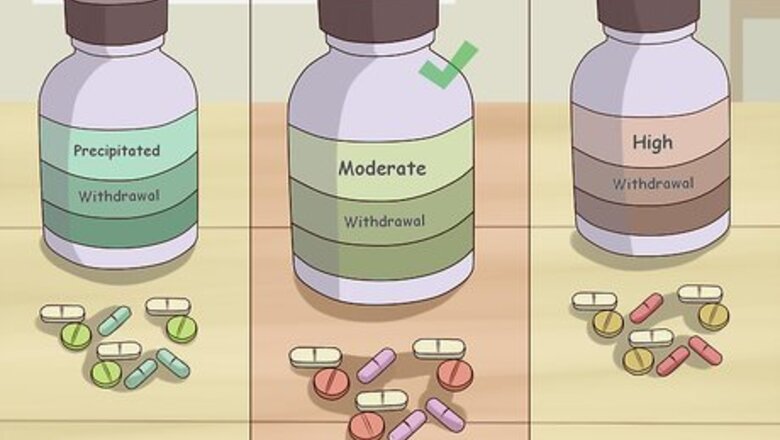
views
X
Trustworthy Source
Mayo Clinic
Educational website from one of the world's leading hospitals
Go to source
[2]
X
Trustworthy Source
National Health Service (UK)
Public healthcare system of the UK
Go to source
[3]
X
Research source
Beginning Subutex or Suboxone

Make sure you are in moderate withdrawal from other opioids before starting treatment. Buprenorphine, the active ingredient in both Subutex and Suboxone, is dangerous to take too soon after taking opioids such as heroin, methadone, or codeine. If you do not wait long enough before taking buprenorphine, you will go into precipitated withdrawal. The term "Precipitated Withdrawal" is used to describe a Super Withdrawal Syndrome which is the result of an antagonist (naloxone) or partial antagonist (buprenorphine) being introduced into an opioid tolerant individual. Precipitated withdrawal is related to the immediate delivery of a buprenorphine dose rather than the cumulative effect of the dose. Precipitated withdrawal can be, under certain circumstances, a thousand times worse than normal opiate withdrawal so you must make sure you don’t introduce Subutex or Suboxone too early. There are time guidelines, but these can be misleading as everyone’s different. Some people, for example, feel methadone withdrawals 24hrs after their last dose, but some people don’t feel any withdrawal symptoms for days. Play it safe and make sure you're not too early. It's always best to play safe and wait at least 18 to 24 hrs after short acting drugs like heroin. If you are on a methadone program you must be down to at least 30 milliliters (1 fl oz) of Methadone daily and you must be off methadone at least 48hrs before starting subutex or suboxone treatment or you may go into precipitated withdrawal. Precipitated withdrawal has a higher risk of happening if you are coming off Methadone, Fentanyl Transdermal Systems, or another long acting opioid. If you have a predisposition to panic then the almost immediate onset of precipitated withdrawal can throw you into a panic attack.
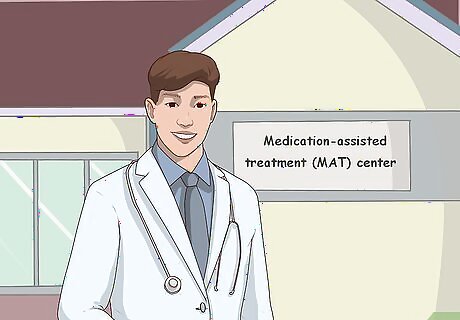
Seek comprehensive addiction treatment. These drugs work best as part of a comprehensive program. For best results, seek research-based counseling or behavioral therapies from medical professionals at the same time. The drug itself should be prescribed by a professional who has received training in how to supervise its use. Buprenorphine typically begins with the "induction phase." Your first doses will be administered by a doctor or other trained professional, while your reaction is monitored. Medication-assisted treatment (MAT) centers are a great resource for prescriptions, support, and monitoring while you receive your treatment. They are increasingly common across the United States.

Take Subutex or Suboxone by placing the tablet under your tongue allowing it to dissolve. If you are prescribed a film you place it under your tongue or between your gum and cheek and let it dissolve. Wet the area first with your tongue. Again, remember: If you take buprenorphine while physically addicted to an opiate you will go into precipitated withdrawal. You should: Not grind the tablets or cut, tear or chew the film Not swallow the medication Not place multiple films on top of each other Not take them in any other way Not eat or drink anything until they have dissolved
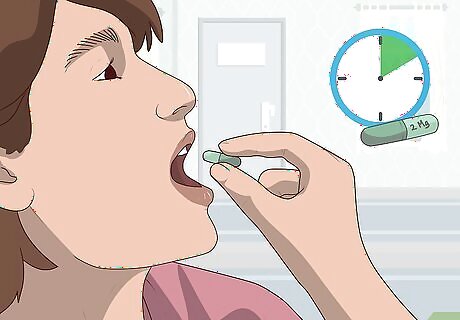
Take either drug 2mg at a time, every two hours, until you are stable. This way there is less chance of precipitated withdrawal happening. Do not take more than prescribed. Do not double your dosage if you miss one. If you miss a dose, take it as soon as you remember. If it is almost time for your next dose, then just skip the dose you missed. The dosage will be set by a doctor according to the condition that you are being treated for and the strength of the medication. Adults are frequently prescribed one of the following: 12 to 16 mg of Subutex (buprenorphine) to be taken daily. Daily dosages of Suboxone which amount to 4 to 24 mg of buprenorphine and 1 to 6 mg of naloxone.

Keep yourself occupied with other things. Suboxone maintenance is all about getting your life in order and breaking free from old behaviours and negative patterns. Simply take the Suboxone the way you've supposed to, under your tongue, then forget about it. Add new things into your life like N.A or groups where you are mixing with new people who are in the same boat as yourself. When you successfully detox, things will automatically fall into place for you. If you're well motivated and do the right things, there is every chance you can change your life for the better. While it's beneficial to chat about your Suboxone treatment and get other people's views and experiences on it, it's not a good idea to constantly visit websites where the main topic of conversation is scare talk about the terrible withdrawals from Subutex or Suboxone. If you keep doing this you may get caught up in a vicious circle and be terrified of ever coming off the drug. You may be clean and free from your drug of choice, but you will become stuck in a rut and still have the negative thinking you had when you were previously addicted to drugs.
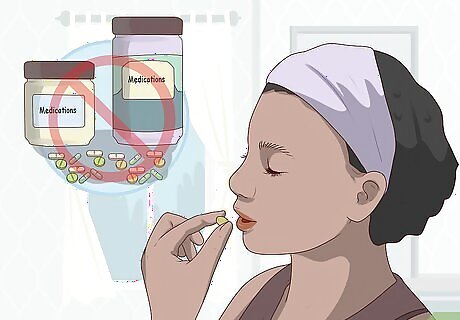
Do not take other medications unless your doctor says it is ok. Prescription medications, over-the-counter medications, herbal remedies, dietary supplements, and vitamins can all interact with medications. Do not drink grapefruit juice while on these medications unless your doctor says you can. Talk to your doctor before taking any new medications or supplements, particularly: Antihistamines, allergy, or cold medications. Sedatives, tranquilizers, or medications to help you sleep. Prescription medications for pain. Narcotics. Seizure medications. Barbiturates. Muscle relaxants. Anesthesia. Tell your doctor or dentist that you are taking this medication before undergoing any form of surgery.

Track your progress. The first goal of Subutex or Suboxone treatment is to eliminate your cravings, stop or greatly reduce your use of the problem drug, and reach the point where you experience few to no side effects. Once you are at this stage, talk to your care providers about the possibility of adjusting your dose. In this "stabilization phase," some patients can lower the dose or switch to a dose every other day.
Tapering Subutex or Suboxone

Have a doctor supervise this process. There is no one-size-fits-all plan for Subutex treatment. Your medical care providers should create a personalized schedule for you. Once you are doing well on a steady dose of the drug, you have reached the "maintenance stage" of treatment. At this point you and your doctors can discuss staying on the drug indefinitely, or weaning yourself off the drug under medical supervision.

Wean off Subutex or Suboxone by doing a slow taper of 1mg to 2mg every 2 weeks. The withdrawals from Subutex and Suboxone are severe because of the long half-life of the drug and the withdrawal syndrome is long and drawn out. No matter what way you withdraw, you are going to suffer from withdrawal symptoms but it can be made much more tolerable if you do it very slowly with very small dose reductions at the end. When weaning off it's important you only drop a dose every 10 to 14 days because of the long half-life of the drug. Both Subutex and Suboxone have a 36 hour mean half-life which means half the drug will be out your system in 36 hours but this does not mean the other half will be gone 36 hours after this. It means after another 36 hours half the remainder will be gone and after a further 36 hours half of this remainder will be gone and so on. If you taper a dose every 3 or 4 days you will be in constant withdrawal and this is not the road to go down as you will end up very unwell and bedridden. When you drop from a high dose to a slightly lower (but still reasonably high) dose, you won't feel too much at all where withdrawal is concerned. It's when you get down to the lower doses that withdrawal is much worse, especially when you are going from something to nothing. Many people make the mistake of jumping off from high doses, like 2mg, not realizing this is 10 times the therapeutic dose of Buprenorphine and the weaning process from such a high dose is extremely hard to take. When tapering off it's essential that you think in micrograms and half micrograms when you taper down from the 2mg or 3mg mark. Doing it this way makes it much easier to tolerate compared to coming clean off higher doses. If you withdraw too quickly you will experience unpleasant symptoms which include stomach cramps and diarrhea, hot and cold flashes, restless leg syndrome and kicking (kicking the habit). You may also have insomnia, unpleasant vivid dreams, depression, aggression, fear and anxiety and your sense of smell may be heightened.
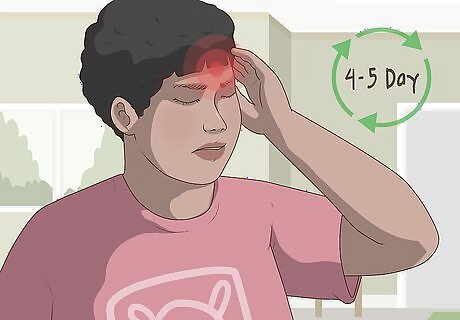
Know what to expect. The abstinence reactions from Subutex and Suboxone are not as severe as Methadone withdrawal but they last just as long and symptoms are at their most acute around the 4th and 5th day after stopping. During late withdrawal your symptoms may go away only to return the next day but eventually they will burn out and go away for good.
After Coming Off Subutex and Suboxone

Be patient with yourself. It's pretty common after any detox, especially Suboxone, to suffer from Post Acute Withdrawal Syndrome (PAWS) where you feel down and depressed for a few months while your body recovers and gets back to normal. You will recover as time goes on. It's common to have fear you are never going to be normal again but you will get back to normal over time.

Change the way you think. When you're addicted to drugs your mindset is ingrained with drug seeking thoughts and habits and at all costs. It's necessary you change the way you think and behave to give yourself a real chance of living the decent life you deserve. Never let your guard down for one minute and always remember just because the monkey is off your back doesn’t mean the circus has left town.

Re-invent yourself and introduce new positive things into your life like exercise programs and new social experiences. It's never a good idea to frequent the old haunts and houses where you used to abuse drugs...if you sit in the barber's long enough you'll end up getting a haircut. It's when you start to indulge in your old way of life that negative patterns can re-emerge and this is when learned helplessness and self-fulfilling prophecy can rear its ugly head and put you at risk.
Knowing When to Talk to a Doctor

Call your doctor if you experience any of the following symptoms: Vision problems Difficulty breathing Confusion Dizziness Sleep disturbances including insomnia or difficulty staying awake Exhaustion Circulatory problems producing pale or blue lips, fingers, or other areas Headache Pain in your back, side, or abdomen Fever, chills, or sweating Nausea or vomiting Constipation and difficulty urinating Diarrhea
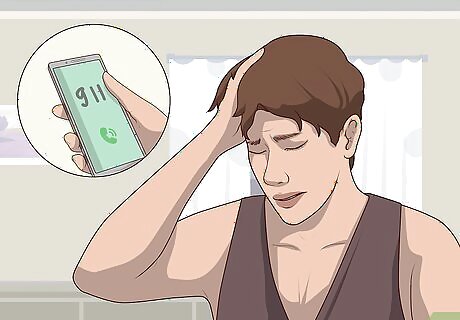
Call emergency responders if you overdose. The symptoms of an overdose include: A slow breathing rate Blurry vision Pinpoint pupils Sleepiness Dizziness

Discuss your age with your doctor. Children and older adults sometimes require extra caution when taking medications. These medications have not been adequately studied in children to determine whether it is safe and effective for them. If you are a minor or responsible for a minor who will take these medications, discuss it with your doctor. It may be necessary for the doctor to modify your dosage if you are older, particularly if you have kidney or liver problems.
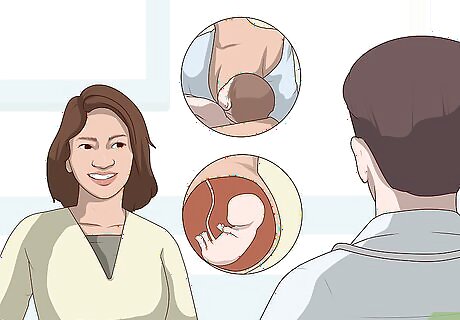
Tell your doctor if you are pregnant or breastfeeding. Even if you think you might be pregnant, but are not sure, discuss this with your doctor before taking this medication. This is extremely important for the health of your child. Scientific studies have not documented that this medication is safe for pregnant people. If you are pregnant, ask your doctor if there are safer alternatives. If you take this medication while pregnant, your baby may go through withdrawal after birth. This medication is not safe for those who are breastfeeding and may negatively impact the infant. If you are breastfeeding, the doctor will likely suggest you take a different medication or discontinue breastfeeding.
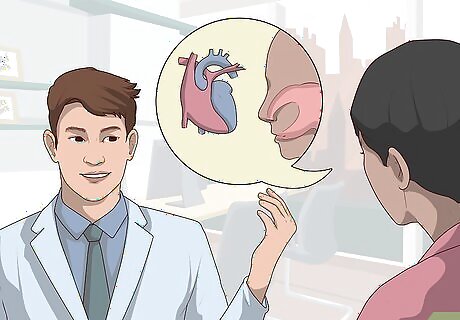
Disclose any current or prior health problems. It is particularly important for your doctor to know if you have any of the following conditions: Breathing problems A heart condition A history of alcohol abuse Stomach, liver, kidney, or gallbladder problems A brain tumor or head injury Problems with your adrenal gland or thyroid




















Comments
0 comment